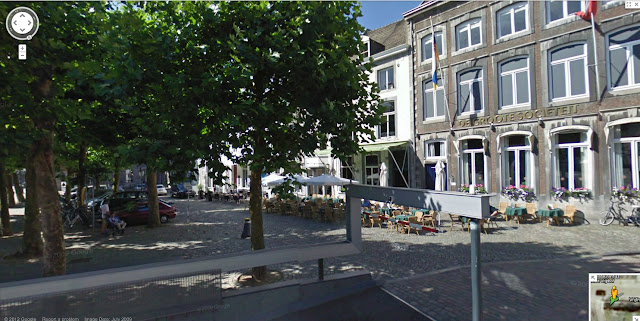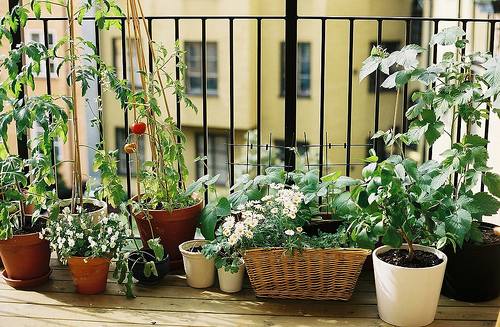People are social creatures. We inherently know this through our own experience and its self-evidence. I like to think this trait extends back to our pre-historic times - back when we all lived in gatherer / hunter tribes. We needed protection and connection from each other and the community always had a social spot. Fire is, perhaps, one of our strongest
connections to the past. You feel it while sitting around a camp fire with friends or at a bonfire.
Anybody who has gone camping, or spent time outdoors, knows the value of a great camp fire. It's where all of the action is ..., especially after dark. We eat food around the campfire, [if you're in Montana] drink beer, converse and enjoy the bond of pure "being". Raw enjoyment without technological distractions.
In an urban setting of today's modern society, people still crave that social place. Public space. If a public space doesn't have people, it can become foreboding. I like to think of public space as the fire of society. Quality public space can make a city great! And we can learn from the campfire on how to design great public space.
Characteristics of a quality fire and public space
Fire draws groups of people. Public space works best with people. If fire draws people to it and we want public space to attract people, what can we learn from fire to help create quality place? What characteristics does fire have that attracts people to it (from a social standpoint)? I will outline some of the characteristic of a campire, below, and draw parallels through the lens of wanting to create quality public space.
1. Security - Fires create both a sense of securing and true safety. We should keep this in mind and strive for the same when creating public spaces.
2. Democracy / Equality - A campfire is something that is equal to everybody. Whether someone is rich or poor a campire is equal. A rich person doesn't want a bigger campfire no more than a soon-to-be rich person does. All of the money in the world can't buy a good fire. It takes friend, family and acquaintances. [Most] all are welcome around the campfire.
3. Inviting - A good campfire, as with quality urban space, is inviting.
4. Romantic lighting - While I'm sure lighting is thought about to every detail (at least I'd hope so), romantic lighting often goes aside for security lighting. Campfires create a low, flickering light. Walking around parts of Paris, a person senses the value of romantic lighting. Perhaps, more attention should be paid to ambiance of the light while providing security. Maybe gas lights would provide a more attractive light than electric. This could be something to think about, especially when food is served nearby.
5. Food connection - Sitting around a good fire often involves, at some point, either fresh food or cold drinks. Quality public space should include food. You'd want it to be sensitive to the different needs of parks, plazas, sidewalks or transit - but food brings people together. There is not doubt about that. Plazas work
best when surround by permeable edges. Little is more permeable than a restaurant. Portland uses transit at Pioneer Courthouse Square for permeability. And it works. But it'd be better with more food around the edges. Busy bus stops and nearly every train stop could use a small food stand. Parks could use small concession stands, vending machines, and/ or drinking water. Sidewalks are perfect for food carts.
 |
| Restaurants surround one of my favorite public spaces in the world at the Vrijthof in the Dutch city of Maastricht. |
6. Stimulates multiple senses - Fire stimulates all sense. It provides light, crackles, warms and provides opportunities to taste delicious food. Parks, plazas, sidewalks and transit can stimulate the senses in some of the same ways - though probably without the crackle.
7. Smoke - Not usually the best part of a fire and you, generally, want to get away from it. However, it does provide an aspect of the fire which is true of all wonderful things: they must have a
yang for their
yin. We could do something similar, though less offensive, in public place. It could be simulated with shade or squirrels. Perhaps even actual smoke from cooking (w/o meat as to not offend vegetarians and others with the smell). Maybe have a
FOLF course in a shared park. That'd provide "smoke" for other users. This is the case in the best park in my hometown of Billings, MT and it, mostly, works (though they could use more signage because it doesn't work so well when people have wedding photos taken in the middle of the fairway to the 2nd hole. The point is to consider smoke when examining fire.
8. Sitting options - It frequently amazes me how few options people have for sitting in vast portions of the public spaces throughout the city - especially along sidewalks. As William Whyte told about in
his documentary, seating is crucial. He particularly liked moveable seats. Fires most often offer moveable seating. A place to rest your bones is crucial within a quality urban habitat for homo sapiens. This is especially true for the elderly and disabled and, especially, at transit stops. Have places to sit invites people "to be" and people watch. Be out in the community. Sitting. Watching.
9. Needs maintenance - A quality fire needs upkeep or it will burn out. It's the same with public space.
10. Extinguishable - I have a theory that roads are like rivers (especially high velocity, high speed auto-dominated streets). As water puts out a fire, urban highways make a place much less pleasant a place to stroll with your lover and kiss. High velocity roads put out the fire of public space (as can other things).
11. Activities - Us planners call it "programming". Many great fires have no programmed activities or activities, at all. And, I'd argue, the best fires (and public spaces) are the ones that need no programs at all. But many great fires have ghost stories, smores or drinking games. Many wonderful public spaces, also, have programmed activities like concerns, festivals or carnivals. These can work very well, but the best public space does not need programmed activities to fill it up. However, in both the case of fire and urban place, it can provide ritual which pulls the community together.
 |
| Programming provides activities at Pioneer Courthouse Square in Portland, OR. |
12. Can burn a person - With the good comes that bad. Always. When fire is not handled with care it can burn you. It's the same with public space. If left deteriorating and neglected, public space can turn into a place of crime and disorder. If attention to detail within the urban context is ignored, these places can become "blank horrors". Handle with care.
13. Purposefully built - Fires serve many purposes. Sometimes they're for cooking. Other times for heating or providing light. At times you just want to hang out by a campfire with friends. Public space works best when there are multiple reasons for people to visit it. If you wanted and activated urban place, we should try to cover as many reasons as possible for people to visit the space as a destination.
14. Permeabile / Interactive - This relationship depends on an ongoing relationship with your surroundings in which information is constantly received from the environment in a way that reveals more signals to a levels of security and connectedness. Fires illuminate and people can poke them with sticks (or kegs of beer). Public space should illuminate the community by connecting people with people and the cities that past generations built. Permeability can be a simple as seeing a tree on the other side of a wall or as complex as a public market in El Salvador.
15. Has a "zone" - The closer you get to a fire, the brighter and warmer it becomes. Fires radiate and create a zone of light and heat. You can feel it when you get closer. Quality public spaces should do the same. Some of the greatest open squares in the world build as you get closer to them, others seem to come out of nowhere and create a rapid shift to a new zone. The point is that the public space is only as good as everything around it.
Moving forward to activate public places
Now that we've drawn the parallels and seen how we can learn from fire to create quality public places, the next logical step is to compare with something you know and see what aspects of a great campfire can be added to activate and improve the space.
This is something that can be championed by a citizen, professional or politicians and at any scale. A person who lives in the neighborhood can decide to put out a bench for pedestrians to sit on. If you have a hotdog stand, maybe you can sell some veggie dogs at the park (though you'll probably need a permit). Professionals can consider campfires in every planned detail of a city - including sidewalks, transit / TODs (
transit-oriented developments), public buildings, plazas, parks and other decisions about urban growth. As one prominent politician from Colombia,
Enrique Peñalosa, said, "You can judge the quality of a project by asking if it makes it a better place to walk, to talk, to do business, to play ... to kiss."
If we are going to create cities and public space that will engage citizens and create pride in the community, it will take all of us and should engage people from diverse backgrounds. This falls directly in line with the democratic characteristic of quality campfires. I learned in a class in Europe that one word repeatedly comes up with the word democracy: pluralism. This can include multiple dimensions of public place from planning to practice.
You can have an entire community gather wood or just a small team, but someone needs to create the spark to get it going. The real campfire happens when people are around it.


















